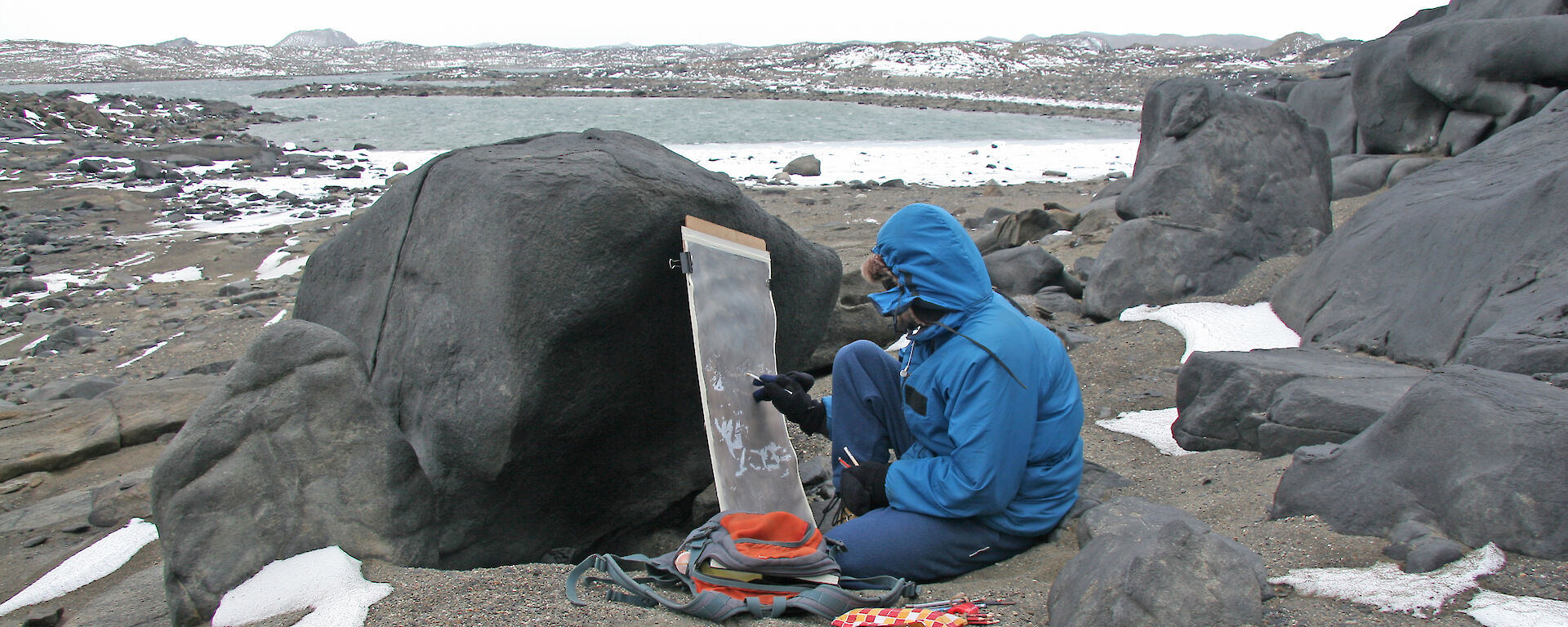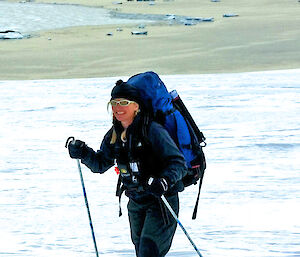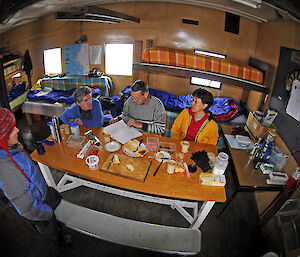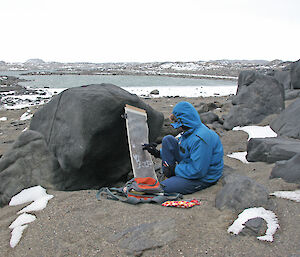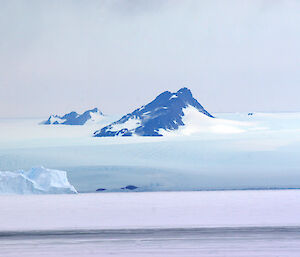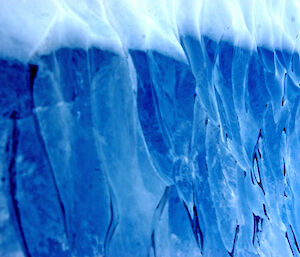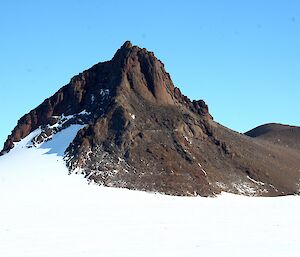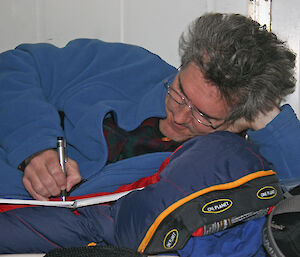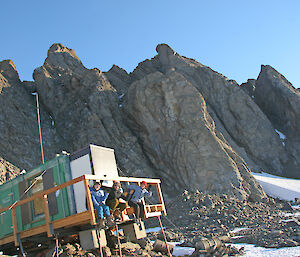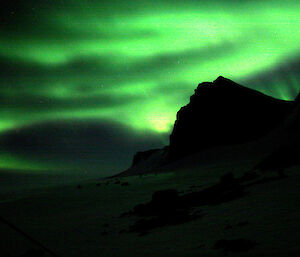Antarctica February 2008
Time has flown. A month has already gone by here at Casey, where I have been guiding arts fellows and scientists in the field and helping with various projects on station.
I have just finished a week helping the aircraft ground support to break down the skiway and pack up for winter. Our last Airbus flight came and went in early February and with it went our aircraft engineers, pilots and aircraft ground support officers or AGSOs – that’s where I fit in.
In early February, the ice breaking ship and Antarctic station supply vessel, Aurora Australis arrived here at Casey to pick up its end-of-season expeditioners, refuel and re-supply stations with food and amenities. On it were my three arts fellows and I couldn’t wait to finally meet them after so many emails backwards and forwards.
Summer has come and gone, and now winter is on our doorstep. Last week we had our first snow for the summer, periods of darkness are now a reality and temperatures are much cooler then normal.
I had a two-day overnighter with my three arts fellows at Wilkes station. Nick Hutcheson a visual artist, Lynette Finch a historian writing a biography on Syd Kirkby and finally Craig Cormick a research writer. Also with us on this trip, a wonderful man named Bill Burch.
Bill wintered at Wilkes station in 1961 at the tender age of 22. He is now 69 and there is not much left of the old station, but Bill's memory brings it alive with his stories, and I could sit and listen for hours.
The hut we are staying in is the only building in any kind of livable state. Almost all of the out buildings are under snow and ice after forty-seven years of blizzards and drifting snow. When the temperatures rise and the snow melts, some of the old station rises from its icy tomb and we get a feel for its past when it was a thriving community.
Bill had many good stories and you could tell he was touched to be in this place again after all those years. For him it was not just any old place, but a place that was a mile marker in his younger years. A place that had changed him for the better – nothing he really said, just a feeling I have.
We had a beautiful ski trip across snow that reminded me of white meringue and crossed the paths of curious penguins, graves of fallen expeditioners laid to rest and old oil drums still blowing around from over two decades ago.
We had a cozy fire that evening and drank station-brewed beers as Bill told his engaging stories. He reckoned it was pretty damn good beer compared to the stuff they used to drink, although he did say they would occasionally come up with a good batch. After a few beers everyone was tired and we decided to call it a night.
Three out of the six of us decided to bivvy outside (no tent, just a light little bag that your sleeping bag fits into). It was −7 degrees. Now it’s starting to get cold. I had two sleeping bags and my down jacket and beanie on, and slept comfortably.
During the night as we lay sleeping a grumpy penguin on his usual track to the rookery stumbled upon us. Well we were just in his way so he didn’t just simply walk around but decided to give us a couple of pecks, sending a squeal from one sound-asleep arts fellow, Craig.
In the morning we woke at 6:00 am so Bill could be interviewed from his old station via iridium satellite phone by an Australian radio station. The next day we went to another field hut called Robbo’s.
This hut is near beautiful sculpted sea cliffs, giant blue bergs out the front, lots of noisy penguins and ancient moss beds, the only green plants in Antarctica. We had a lovely day practicing ‘self-arrest’ or stopping on steep snow slopes, topped off by walking around the coast and lunching on the sunny deck of the hut.
The following day Nick and I skied to another hut called Jack’s Donga. Twenty-five kilometres of beautiful coast line and a cracker of a day. The others, Craig and Lynette, didn’t know what they were missing. Just as well because they had a heap of research to get done on station. (Yes, my bloody blisters popped up again on my feet, as if I needed them.)
Not much to see inland but the bergs all out on the coast were blanketed in beautiful evening light and the hut was a welcoming sight.
We descended down to the hut finding the slope was a sheet of blue ice scoured by the winds, which made for tricky skiing as the surface kept changing from ice to hard, crusty snow.
Once inside the hut, we cranked the gas heater on to warm our toes and melted snow for sweet tea. We then feasted on some two minute noodles, cheese and vegemite sandwiches, our tea and chocolate bars. We made it back to station that night in time for dinner which was a bonus after skiing all day.
Day five and we took 2 inflatable rubber boats to Shirley Island, which is a penguin rookery – smelly, noisy and very exposed to winds. Freezing our whatoozies off in 15 km-an-hour winds and −8°C made us walk faster to keep warm and we managed to walk around the whole island in four hours. Skuas buzzed over our heads, they are large sea birds similar to a pacific gulls, and feast on little penguin chicks. They don’t appreciate us wandering too close to their chicks. I had a near miss to the back of the head.
We met our pick-up and had dinner on station.
This is the night when everyone on station lets their hair down. All the re-supply and refuelling is finished and the old station leader hands over to the new incoming leader. It is a very touching ceremony.
Then its time for the end of season bash, a big party as all the summer expeditioners will be leaving Casey and the winter expeditioners are left on their lonesome, It’s a tough time for everyone. Casey has become such a tight-knit little community and everyone looks after everyone else. The most unlikely characters become best friends and people meet people and stay best mates for life.
Anyhow you know the rest of the story, sore heads and a frantic packing to get taxied out to the ship for our departure on our way to Davis station and then on to Mawson station. A forty-day round-trip ship tour.
As we are waiting for our boat everyone is having mixed emotions. Some want to stay, some want go and some don’t even know what they want. A few tears and lots of cuddles as we leave behind our latest, greatest new friends. Some for life, some for a summer… none the less no matter how many times you climb on that barge to leave you always feel sad to go. All the winterers waving goodbye and blowing kisses and some fighting back tears of new found loves sailing away. As the ship blows her deafening horns to sound our departure we cover our ears. Then we see all the flares going off from Casey station. It’s tradition and a way of saying goodbye.
As I stand out there on the ship deck watching Casey fade away into a speck I feel tears rolling down my cheeks and freezing in my sunglasses. I’m always moved by the people and the place. Every time I leave I never know if it will be my last…

